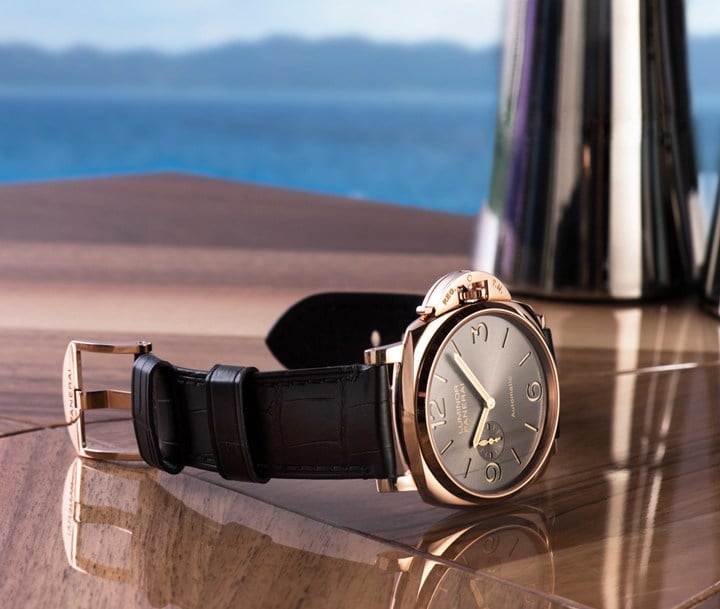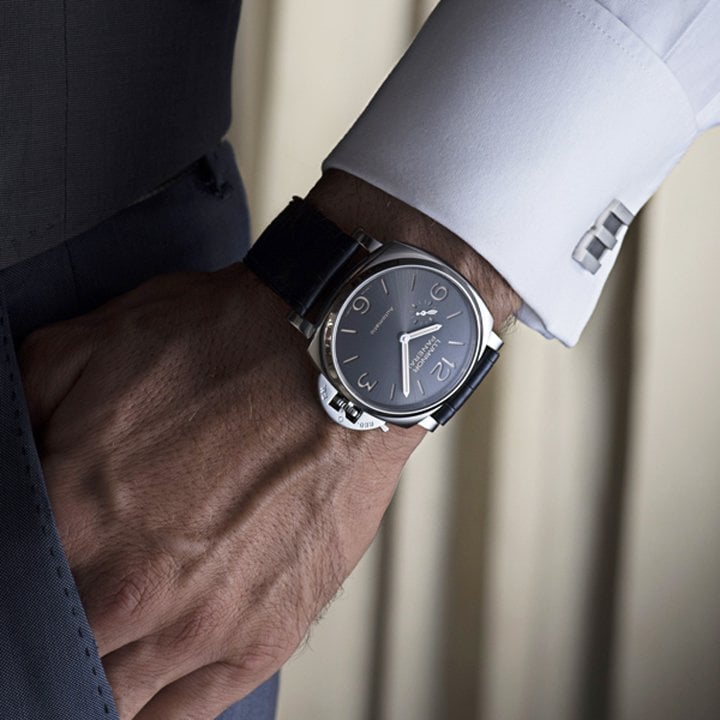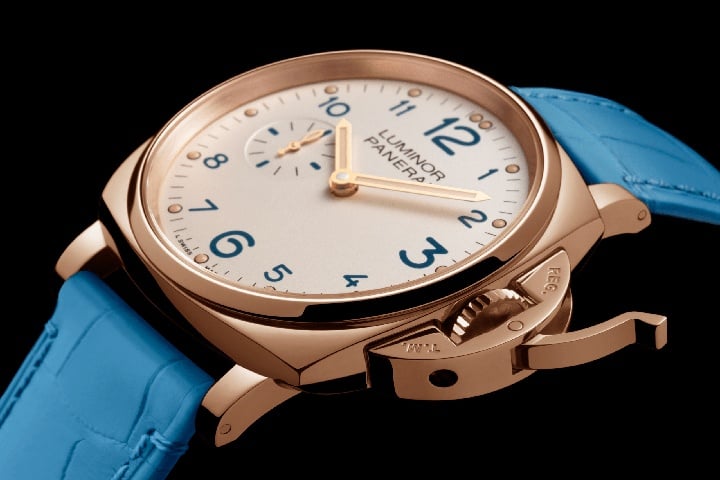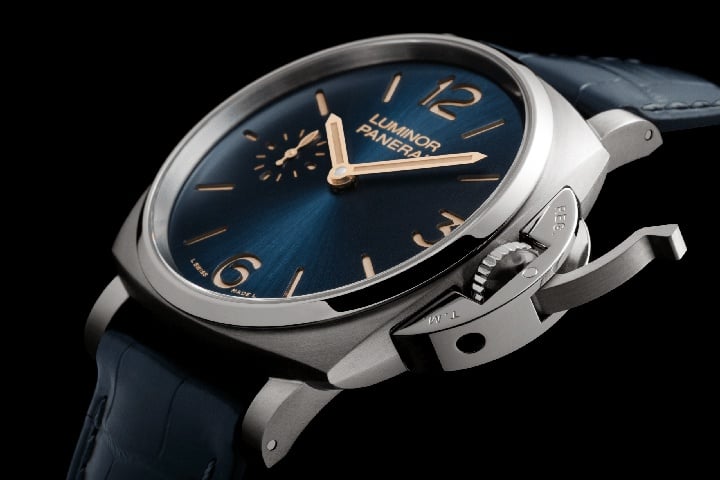
Officine Panerai’s Luminor Due 3 Days Automatic Oro Rosso 45mm.
By Michael Clerizo
There is plenty of profundity in Italian culture especially in physical objects whether buildings, paintings, cars or watches. And, the meaning behind these creations originates in the desire to reconcile two seemingly opposed ideas: beauty and pragmatism.
Think about Ferraris. We all ogle a Ferrari when one zooms into view. They are stunning-and they are also a means of transportation. Cars do not need to be drop dead gorgeous but Ferraris are. That’s what happens when beauty and pragmatism are combined.
The same is true for watches from Panerai.

Officine Panerai presents the P.4000 calibre, with the Luminor Due 3 Days Automatic Titanio 45mm, which is the first automatic movement with an off-centre micro-rotor completely developed and made in the Panerai Manufacture at Neuchâtel.
Founded in 1860 by Giovanni Panerai in Florence as a shop selling and servicing clocks and pocket watches, by the early 20th century the enterprise evolved into a specialized supplier of watches and other instruments to the Italian Navy. It wasn’t until 1993 that Panerai watches became available to consumers.
Today’s Panerai are direct descendants of those pragmatic ‘tool’ watches. Where does the beauty come in? Consider the Luminor Due Collection. Beauty is present in the polished case metals; stainless steel, rose gold and titanium, in the symmetry of the dials on both the 42mm and 45mm version-and just revealed at SIHH in January, a 38mm dial-and in the dial color/case metal combos that include anthracite and stainless steel or rose gold, blue and titanium, black and rose gold and ivory and rose gold. The darker dials feature a subtle sun burst finish. For a pragmatic touch, the hands and hour markers glow in the dark.

The Luminor Due 3 Days Oro Rosse 42mm is the thinnest Luminor case ever created, with a thickness of only 10.5mm.
Beauty and pragmatism also co-exist inside the watch as the Luminor Due collection features several different movements: The P.1000 hand wound calibre in the 42mm case, (some models feature a skeletonized P.1000/10); OP34 calibre in the 38mm and 42mm (automatic, small seconds, date, 3-day power reserve); the P.4001, P.4002, and P.4000 automatic in the new 45mm.
Panerai’s movement components have a far simpler finish than on a traditional Swiss movement, resulting in a subtle visual harmony. Interestingly, the skeletonized version is only seen through a crystal at the back of the watch so that the view of the functioning movement is unimpaired by the hour and minute hands.

Officine Panerai’s Luminor Due 3 Days Titanio 45mm is a hand-wound mechanical, P.1000 calibre movement, which is a new in-house calibre with a power reserve of three days and it is immediately recognizable as a Panerai calibre from both the technical and aesthetic points of view.
The shape of the case also links to something deeper. Called a cushion case and characterized by a perfect circle contained in an almost perfect square-one with slightly curved edges-the case is found on many of Panerai’s watches. The shape also frequently appears in the architecture of Florence, Panerai’s hometown. One example is the Pazzi Chapel completed in 1443. A dome resting on four curved triangles, called pendentives, caps the chapel. Stare at the dome and imagine the pendentives slightly flattened and you’ll see a perfect circle inside an almost perfect square-in other words, the Panerai case.
Monks used the Pazzi Chapel and when they gazed at the dome they saw a visual metaphor for the perfection of the universe. The same applies to the Luminor Due, look at the time and contemplate the meaning of perfection. When the Luminor Due collection debuted, much comment focused on the fact that the watches-at 10.7 for the automatic and 10.5 for the hand-wound-are the thinnest ever from the brand. The thinness proves one point perfectly summed up by the great Italian writer Baldassare Castiglione in his “The Book of the Courtier,” published in 1528. “Everyone knows the difficulty of things that are exquisite and well done-so to have the facility in such things gives rise to the greatest wonder.” Ah, the Italians.








Leave a Comment